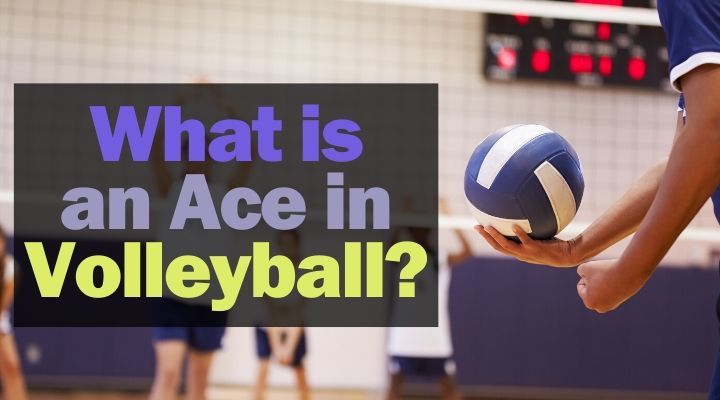What Is an Ace in Volleyball? (Full Explanation)
The ace is one of the most exciting moments in a volleyball match.
It puts to rest any hope for the receiving team and quickly awards a point (or side out) to the serving side.
Many people assume a serve only counts as an ace when the ball strikes the floor untouched on the serve.
Several instances award an ace to the server and serving side.
Read on to learn what is an ace in volleyball, how to achieve a serve that results in an ace, and what teams do to celebrate aces.

What Is an Ace in Volleyball?
The FIVB is our typical resource for definitive rules and regulations.
However, their definition of an ace found in the FIVB Volleyball Information System (VIS) is rather bland.
The VIS is used to determine the MVP and other awards for FIVB sanctioned events. They reward players with credit for an ace when a “point is directly scored by the service.”
We can look to the NCAA Volleyball Statistics Manual for a clearer definition.
The NCAA Volleyball Statistics Manual provides four scenarios that result in an ace for the server:
- If the serve strikes the opponent’s court untouched.
- If the serve is passed by the opponent but can’t be kept in play.
- If the referee determines a violation by the receiver (lift, double contact, etc.).
- If the receiving team is out of rotation in any way.
These four scenarios are fairly all-encompassing.
While the most popular form of ace is certainly the ball striking the opponent’s court untouched, the more likely way to achieve an ace is to serve a ball that’s difficult to control by your opponent.

Serving an Ace
An ace is a great boost to a server’s confidence. It’s also detrimental to the esteem of the receiving team.
Some aces are achieved by simple miscommunication on the part of the receiving team. Others come from practicing a solid serve and using a good serving strategy.
Once you have a serve that’s purposeful and can be placed wherever you’d like it to go on the court, it’s time to use some key strategies to increase your odds of an untouched or mishandled ball.
Here are several strategies to consider implementing for more aces:
- Identify and serve weak passers.Don’t serve the libero or defensive specialist. Watch warmups or scout your opponent in a match to determine who might be likely to misplay a serve.
- Serve to the front-row players.This is beneficial in multiple ways. Even if the serve is passed, the offense will now be out of rhythm. Front-row players are known to be less skilled passers than other players. This can lead to misplaying the serve and an ace!
- Serve to the sidelines.Many aces come from receiving players having a hard time diagnosing whether the ball is in or out of bounds. This results in a last-second effort or making the wrong choice altogether.
- Serve hard, low, and deep.Getting the ball deep puts pressure on passers to decide if the ball is in play. It also challenges passers’ abilities to get the ball up to the net and can lead to poor form. A low trajectory emphasizes the struggle of identifying an in or out ball.
- Serve up and deep.This raises the forearm platform of the passer and makes a bad pass more likely. Many players struggle to use hands in serve receive and a higher serve puts pressure on their hands passing skills.
- Find the desperation substitute.If a player is struggling to return serves, some coaches may decide to substitute the player out. The new player is forced off the bench in an atypical rotation and this “rustiness” can be exploited by immediately forcing action their way.
- Attack a hidden setter.If the setter is being protected by another player in serve receive, this indicates the team wants to make sure they can smoothly transition from serve receive to their offense.One way to jam the passers is to put a serve near the setter that the setter wants nothing to do with. This will create the potential for confusion by the serve receive and could increase the odds of an ace.
As you can see, it’s important to cause as much confusion as possible when serving.
Serving to the extremes of the court (short, deep, wide) can help encourage difficult decision-making.
Getting the ball to the least skilled passers is also a good idea.
A good serve is imperative for scoring aces. No amount of strategy will make up for poor serves.
Practicing accuracy, power and consistency is vital to have any hope for an ace.

Ace Chants
Given the gravity and instant gratification of an ace serve, many teams choose to celebrate an ace with a chant or movement performed in unison.
Some teams will swipe the floor after an untouched ace occurs and many will shout, “Ahhhhhhhhhh Ace,” as they do so.
Feel free to develop your post-ace routine but remember sportsmanship. Your team must understand the line between good fun and gloating.

